I didn't realise the risks of DVT until I ended up in A&E - here's how to keep safe when flying
Having learned the hard way by suffering a flight-induced blood clot, Josephine Perry warns against complacent travel habits with eight ways to ensure you arrive fit and fresh
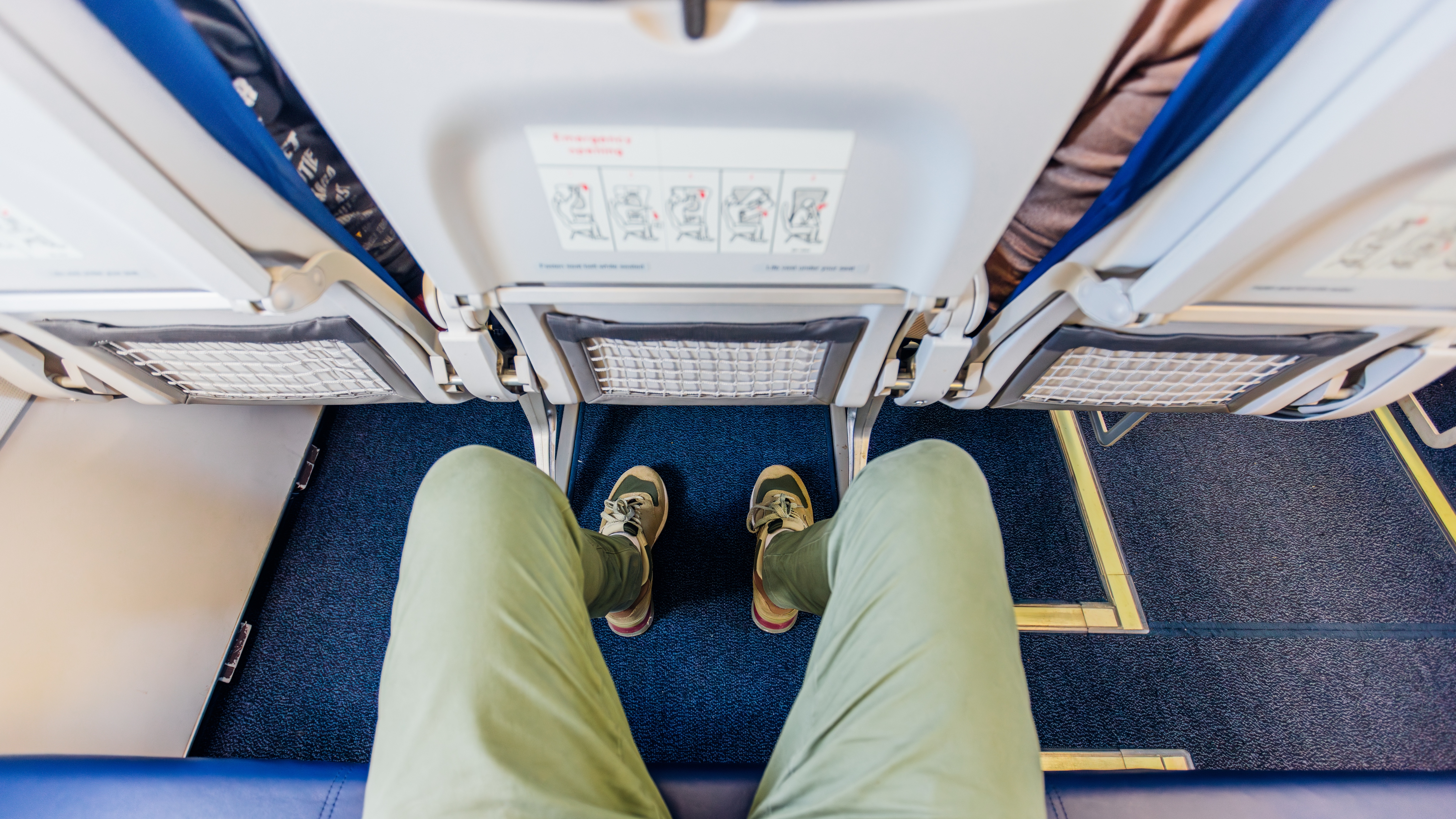

The post-race aches were all too familiar and didn’t cause me any major concern. But I was in an unfamiliar place, New York City, and about to board an eight-hour flight home. My best chance of minimising DOMS (delayed onset muscle soreness), I figured, was to sit still and rest. Throughout the flight I barely moved, doing my best to relax and ignore the pain. Big mistake. Five days later, my left leg was still throbbing, my calf had swelled, and a suspicion something wasn’t right led me to google deep vein thrombosis (DVT) symptoms. That night, A&E confirmed my worst fear: a blood clot. Cycling was banned for four weeks, blood thinners prescribed for three months, and the reality of how dangerous long-haul travel can be hit home.
Most people would realise that a swollen leg too sore to put weight on requires medical help, but in a sporting culture where DOMS and niggles are a badge of honour, you very quickly write off severe discomfort as part and parcel of the privilege of riding your bike in cool places. This, as I discovered, can put us in difficult, sometimes dangerous situations and risk our long-term health. So, while DVT was at the extreme end of negative travel outcomes, how do we take better care of ourselves so that we get to our cycling destinations fresh and fit without risk to health or performance?
To find out, we have picked the brains of three experienced travel planners, all of whom advise professional cyclists on how to travel well: Elizabeth Walker of Liv Factory Racing; Luke Gupta, a performance and innovation consultant at the UK Sports Institute (UKSI); and Megan Chard, a director for the Jayco-Alula women’s WorldTour team.
Plan well ahead
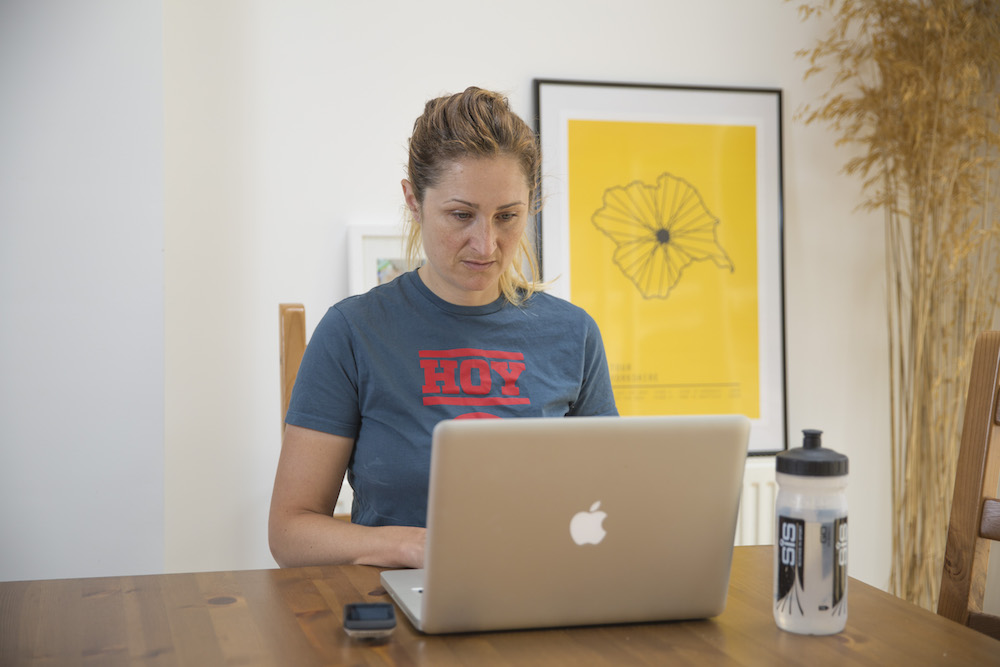
Make your plans with plenty of time
Walker works with riders to create a travel plan to complement their training and health needs: “On a travel day, sometimes this means waking up early for training, stopping mid-journey for training, or leaving early so that training can happen in the evening.” By publishing the team calendar for the whole year by February, Walker ensures the riders know their travel dates and locations well ahead of time – she confirms them 30-45 days in advance.
Gupta points out that many riders fail to take into account total travel time. “What tends to catch people out is the short-haul trips where they think, ‘The flight’s only two hours, I don’t really need to do much,’” he says, “but often door-to-door it is a lot longer, which needs to be factored into planning.”
Put it into practice: Look at your plans and calculate the door-to-door travel time. Then, with this in mind, consider how you approach all elements of your planning. Ensure you have enough healthy food and drink and consider how you will link up the individual transport steps of the whole journey.
Make a detailed plan
Megan Chard is acutely conscious of the demands placed on riders by the travel plans she makes. As an Australian team, Jayco-Alula’s itinerary involves extensive and wide-ranging travel. Chard explains how their travel goal is to “reduce stress, make sure riders are well fuelled and recovered pre- and post-race, and make travel as efficient as logistically possible.” This means preparing early and thoroughly.
Get The Leadout Newsletter
The latest race content, interviews, features, reviews and expert buying guides, direct to your inbox!
Put it into practice: Keep a list of what you need to pack, what needs to be booked (and by when) and what you need to buy ahead of time. Write these items in your diary. Then make sure you separate out anything you will need if there is a delay or luggage goes missing – medication or chargers, for example – and put it into your hand luggage.
Bear in mind the bike
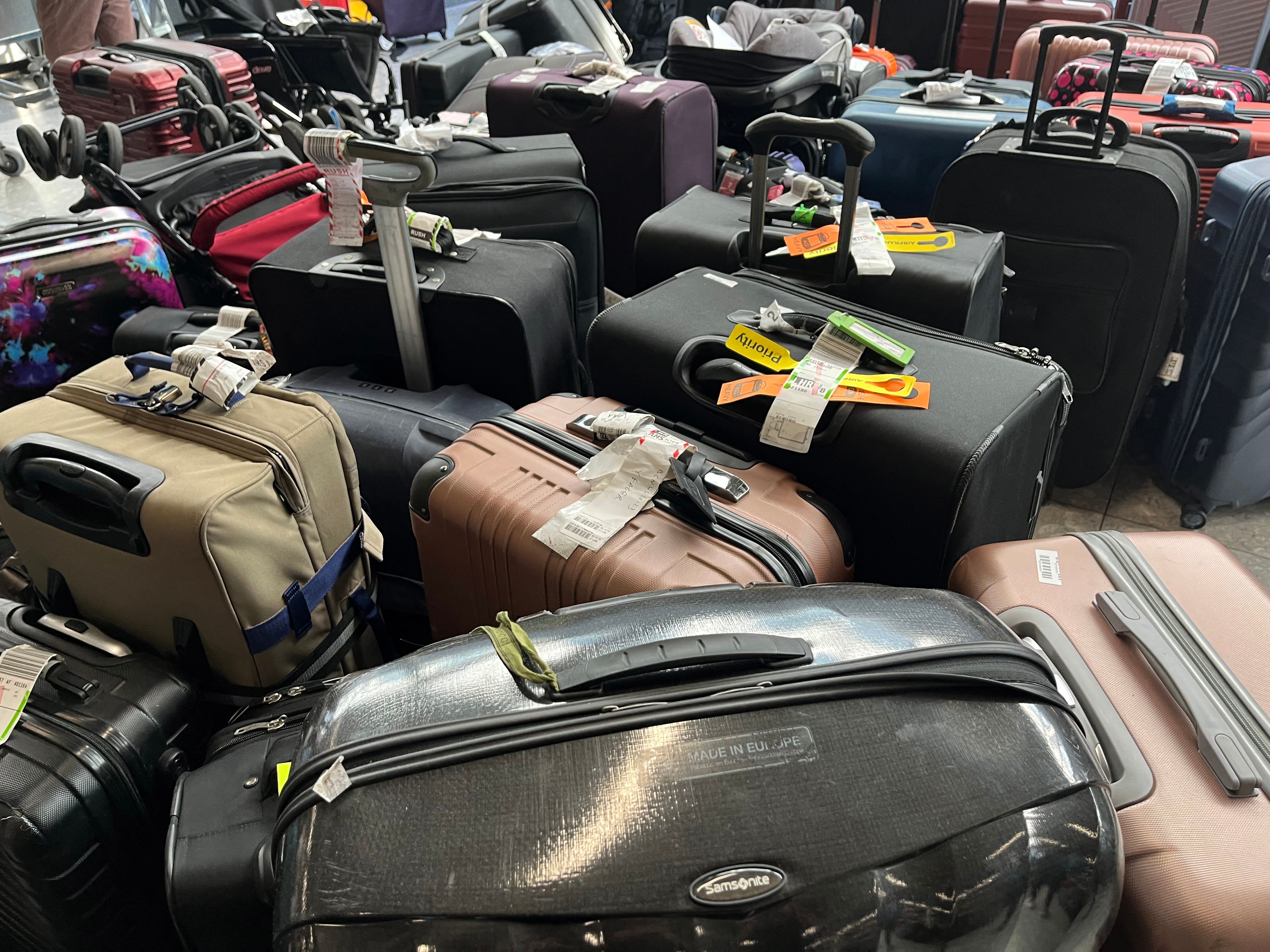
Limit concerns over your luggage
Pro riders have a huge advantage over amateurs when it comes to travelling to training camps or races. Big teams such as Ineos Grenadiers drive all the bikes to races in their team trucks so their riders very rarely have to deal with the airlines or the stress of knowing their bike is being looked after. The rest of us need to keep ours safe in transit, and that can be a big ask.
Put it into practice: Think about convenience, not only cost. Travelling on a budget means you can end up with convoluted flights with lots of connections and a poor bike policy that drags out the stress and ‘dead’ time. Spending a little more on a simpler, less stressful route, with a bike-friendly airline, can pay dividends.
Accept the chaos
“People used to think travel was a period of recovery for athletes, as it meant they weren’t training – but often it’s actually quite stressful, both physically and psychologically,” says Gupta. However well you plan or prepare, there are so many factors involved (weather, strikes, the public) and it’s easy for something to go wrong. Walker tries to prepare her riders for this: “Things can go sideways quickly when luggage doesn’t arrive or flights are late or cancelled, so we try to embrace flexibility.”
Put it into practice: Build time for problems into your planning. You need to arrive at your destination at least a day or two before a race in case of delays. Allow plenty of time for connections too. If you anticipate problems, you’ll be far less angsty when they occur.
Get nutrition and hydration right
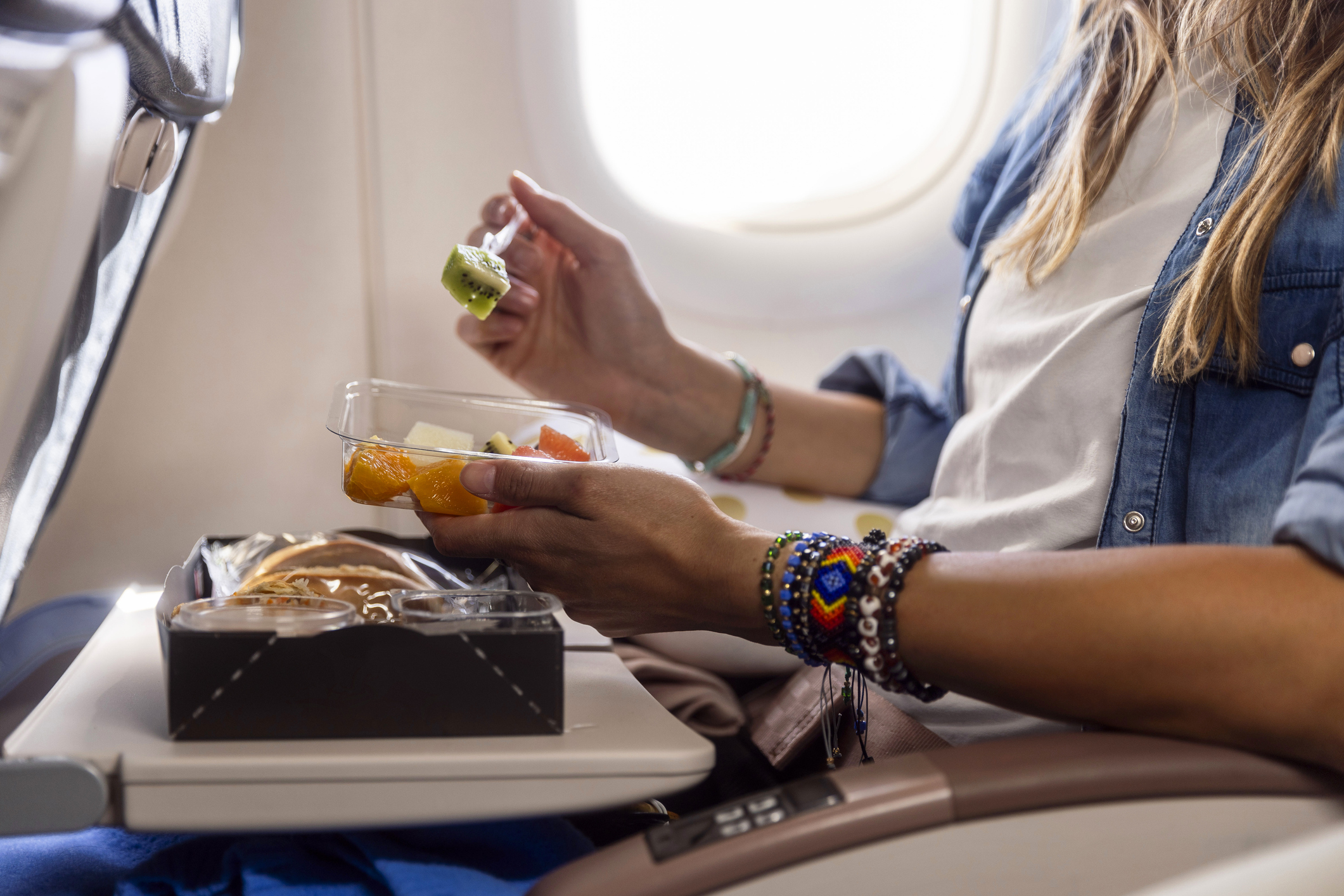
Pack your own, healthy choices
All pro teams have departments focused on nutrition which take into account eating and drinking while travelling. As amateurs we have access to high-performance dieticians such as Rebecca Dent, who advises being proactive and planning fuelling for the entire duration of your travel.
Put it into practice: Dent provides three top tips for healthy fuelling while travelling. Firstly, adjust your watch to your new time zone and reset meal times accordingly. Secondly, take healthy snacks on board – don’t rely on the inflight meal. Fresh fruit, dried fruit, rice cakes, raw carrots, cherry tomatoes, cucumber, peppers, fruit and nut bars, popcorn, roasted chickpeas, boiled eggs, egg muffins and meat sticks are among Dent’s suggestions. Finally, Dent advises carrying an empty water bottle with you through security, which can be filled at the airport’s free water fountains and on board. Popping in an electrolyte tablet can add to the taste and the benefits.
Use travel time wisely
“We use the analogy of a mobile phone,” says Gupta. “Before you go, you want a fully charged battery and on the flight you want to minimise battery loss by putting it on low-power mode.” His point is, it’s the same with the human body. Even sitting still on a plane, you’re still using energy, so you may as well have a plan for making the best possible use of that time.
Put it into practice: Don’t just plan for the snacks or sleep you would like to have on the plane. Think of tasks that might help you perform better. Listening to your race visualisations through headphones is a way to mentally rehearse strategies. Writing a race plan with tasks to focus on in each section could be valuable. Reading an autobiography of a rider you love to watch could give you some inspiration.
Have a sleep strategy
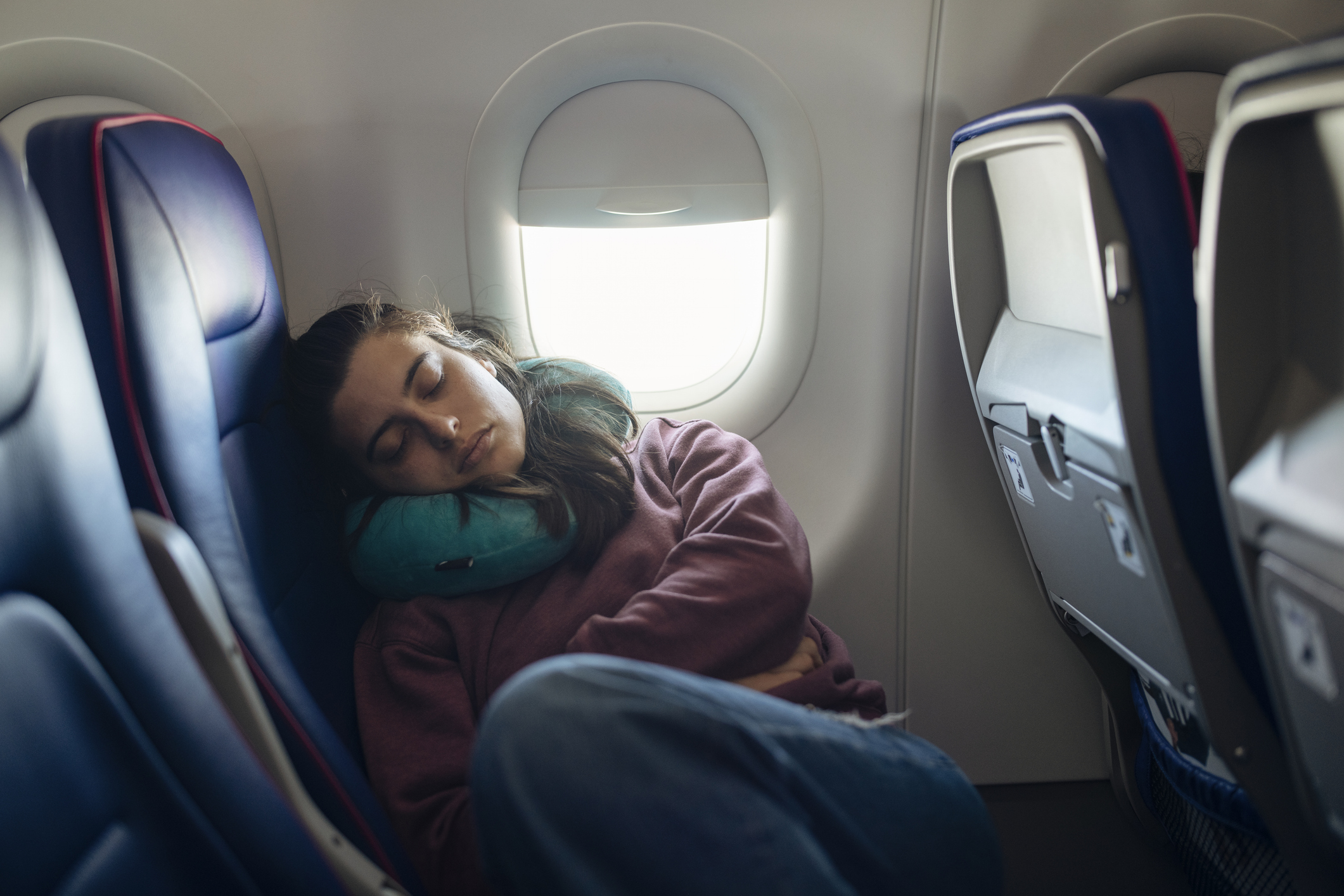
Make the most of sleep time available
Gupta tells us that the question he is asked most by athletes is: how do I sleep while travelling? He tries to help them re-conceptualise plane sleep. “There’s a preconceived idea that people need unbroken sleep for a long period of time,” he says, “but planes are quite sleep-hostile environments. If you’re in economy, your ability to sleep is hampered by sitting upright, and you are at altitude breathing dry, recirculated air. There may be turbulence, lights coming on and off, and meals at random times.”
Gupta’s advice is to sleep as and when you can. “If you slept for eight hours straight on a plane, you would wake up very dehydrated, very hungry and very stiff . Instead, aim for short bursts of sleep interspersed with moving around and eating healthily.”
Put it into practice: Jayco-Alula’s Chard works with a sleep specialist to provide jet-lag strategies for the riders. These contain a lead-up period, flights, stopovers, and arrival with things riders need to be doing in each block and tips around adjusting the body clock by shifting bed and wake up times, limiting caffeine, and using melatonin. For the Liv Factory Racing riders, Walker recommends earplugs or noise-cancelling headphones, eye masks and travel pillows
Hype up the hygiene
Travelling back from a training camp, gran fondo or race when your immune system may be suppressed from the hard exertion of the event may put your health at risk. “You have no idea what state of health other people are in when they get on a plane,” says Gupta. “They are touching all sorts of things and you are in close proximity to them, so it is a bit of a cesspit of germs.” Chard adds: “Given the Covid situation recently, we have gone back to advising our riders to wear a mask and to test prior to travel.”
Put it into practice: The UKSI athlete health team do a lot of work managing health on transport, and advise hand-washing, hand gels, minimising skin contact with surfaces, good hygiene when eating, and continuing Covid protocols such as mask-wearing when in confined spaces.
How to avoid DVT
Deep vein thrombosis occurs when blood clots form in the veins. There is a risk these clots break loose, move up the venous system and lodge in the lung, which can be fatal. The symptoms of DVT are usually swelling, pain in a leg that doesn’t fade with rest, sometimes a change in colour of the leg (to red or purple) and a feeling of heat in the leg. After a race, low blood pressure, dehydration and DOMS make a rider more susceptible to DVT. Being unable to move around amplifies the risk.
How to reduce the risk
1) Hydrate well after the race, especially if you will be travelling soon after the race – and use electrolytes.
2) If you are flying home do the suggested leg exercises: leg pumps, ankle circles, hip and knee flexes, and walk around the plane regularly.
3) Some doctors advise wearing knee-high ompression socks and taking an aspirin if you are travelling for over six hours.
4) Actively look out for leg swelling or pain for a few days after a long journey.
Advice from a regular flier
Oli France is a cycle adventurer who has visited over 75 countries. Difficulties he has confronted on his travels include getting interrogated, being held at gunpoint, catching meningitis, getting caught in an earthquake, being surrounded by militia groups and having a near-miss with an avalanche. These days he takes planning very seriously.
Here are his top tips:
- Do a risk assessment: “I spend a lot of time thinking about risk factors and what I can do to mitigate them. I will always have solid local contacts and a well-formulated plan and emergency procedures.”
- Plan a decompression period: “When I arrive, I work on acclimatising, taking into account new cultures, new temperatures, different humidity, different elevations and different food.”
- Follow regular sleep routines: “To stack the odds in my favour of good sleep, I pack eye masks, earplugs, and try and avoid caffeine, keeping as close as possible to my normal sleep routine.”
- Focus on hygiene: “Food poisoning or stomach trouble can be your downfall. Be conscious of keeping hands clean and using antibacterial spray. Freshly cooked food is generally the safest – any bacteria has been killed.”
- Rest before travel: “Have everything planned and done in advance and then you can just switch off and do those basics of eating and drinking well so you are prepared for high performance.”
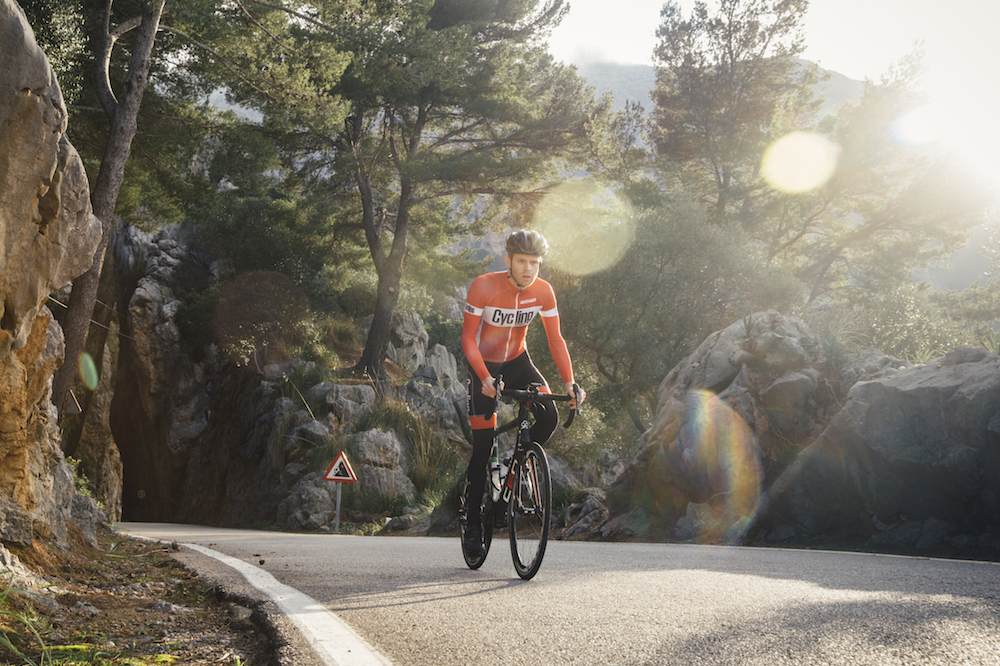
Cycling abroad is a joy - just make sure you get there and back safely
A well-planned journey to and from a cycling trip, incorporating the practical suggestions here, allows you to make the most of your time travelling. Planning the journey as well as the racing (or riding) at the end of it should mean that those hours in the air or on the road are no longer ‘dead time’. Instead, make travel time work for you so that, once you arrive, you can be confident of being fit, healthy and ready to go.

Thank you for reading 20 articles this month* Join now for unlimited access
Enjoy your first month for just £1 / $1 / €1
*Read 5 free articles per month without a subscription

Join now for unlimited access
Try first month for just £1 / $1 / €1
Dr Josephine Perry is a Chartered Sport and Exercise Psychologist whose purpose is to help people discover the metrics which matter most to them so they are able to accomplish more than they had previously believed possible. She integrates expertise in sport psychology and communications to support athletes, stage performers and business leaders to develop the approaches, mental skills and strategies which will help them achieve their ambitions. Josephine has written five books including Performing Under Pressure, The 10 Pillars of Success and I Can: The Teenage Athlete’s Guide to Mental Fitness. For Cycling Weekly she tends to write about the psychological side of training and racing and how to manage mental health issues which may prevent brilliant performance. At last count she owned eight bikes and so is a passionate advocate of the idea that the ideal number of bikes to own is N+1.
-
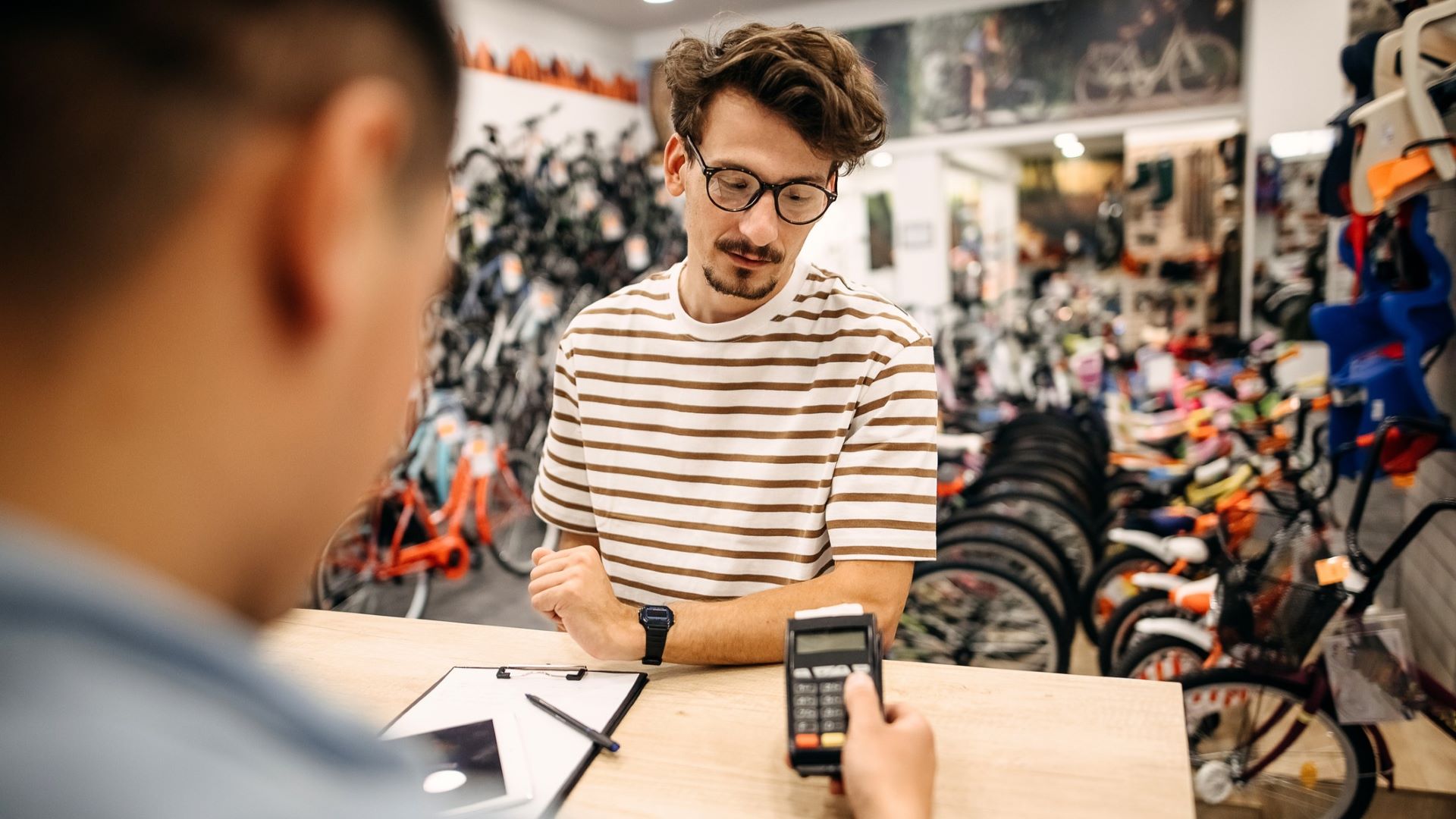 Trek, State and Specialized raise bike prices while other brands limit US releases — Is this just the beginning?
Trek, State and Specialized raise bike prices while other brands limit US releases — Is this just the beginning?As tariffs hit, the bike industry is forced to adapt, whether through price increases, limited releases, or a restructuring of supply chains
By Anne-Marije Rook
-
 How I got my non-cyclist friend hooked on riding bikes — and how you can, too
How I got my non-cyclist friend hooked on riding bikes — and how you can, tooWith a little bit of gentle guidance, “bikes aren’t my thing” can turn into “when’s our next ride?”
By Marley Blonsky